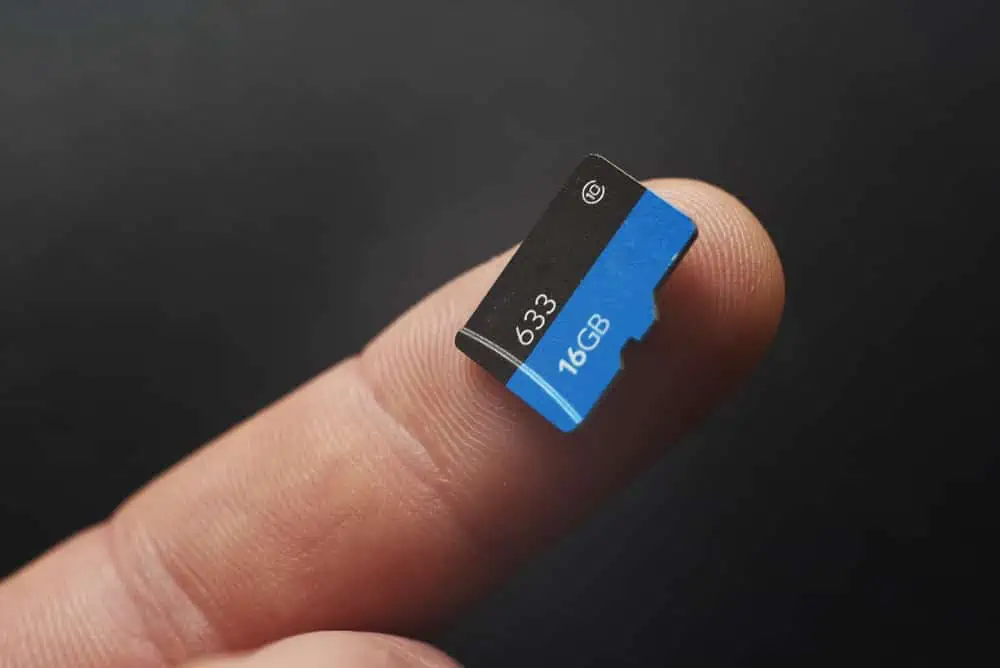Do we still need optical storage devices today? Follow me as I explain these storage devices and the ways you can benefit from them.
Overview
The terms optical and storage devices give ideas about this concept of storage. A summary of the ideas is that these storage devices use optics (properties of light) to read and write data.
At a time, optical storage devices were strongly considered a potential replacement for HDDs (Hard Disk Drives) in computers. However, their lack of growth in storage capacity compared to HDDs and even SSDs didn’t allow that to happen.
Essentially, although they are less vulnerable to environmental conditions and are durable, they don’t offer enough storage space. For example, the most common optical storage devices around are Compact Discs (CDs), Digital Versatile Discs (DVDs), and Blu-ray discs.
Furthermore, CDs normally have a storage capacity of around 700 MB only. Meanwhile, DVDs with a single layer offer up to 4.7 GB of storage space, and multi-layered ones offer 8.5 GB.
These storage spaces are quite small and seem like a joke compared to that of HDDs and SSDs. As a matter of fact, most HDDs and SSDs nowadays offer a storage space of up to 2 TB.
Due to this, people mostly use optical storage devices as a means of long-term archiving or data backup. In actual fact, most computer manufacturers hardly include an optical disk drive in their laptops as people barely use them.
Nevertheless, there are Blu-ray discs capable of storing up to 50 GB of data. Hence, even if you choose to use an optical storage device, Blu-ray discs are the best as they offer a larger storage capacity.
Now that we know what optical storage devices are, why don’t we move to the next section to find out how they work?
How do Optical Storage Devices Work?
As hinted earlier, optical storage devices use properties of light to read and write data. However, all this won’t be possible without an optical disc drive with a laser source, a lens, and a rotational mechanism (DC motor).
Besides, optical discs usually have up to four layers. These layers include a visible label, the data-containing plastic, reflective aluminum, and polycarbonate to protect the disc from damage.
However, the visible label can only be found on modern optical discs and is mainly for visually identifying its content. For example, a DVD containing a movie might have the movie’s title and pictures of major characters on its visible label.
Meanwhile, the data-containing plastic layer underneath this visible label is where the disc actually stores information. It stores (write) information in the form of a physical binary code.
This is done with the help of the laser source and lens of the optical disc drive. Basically, the laser source creates a laser beam.
The lens, on the other hand, guides the direction of the beam to mark dots (binary codes) around the disc’s surface. That’s why if there is any alteration/scratch on a CD’s surface, it begins to malfunction.
Moreover, the disc must be spinning during the writing and reading process, and data is stored in a spiral-shaped pattern. That’s where the optical disk drive’s rotation mechanism (DC motor) comes in.
Also, this is why you will see a hole in the middle of an optical disc. The hole is attached to the optical disc drive’s DC motor, preventing it from falling off while rotating.
However, in order to translate (read) the binary code into information for a device, the process is a bit different. Specifically, while the optical disc is rotating, the laser source shines a light beam on its reflective aluminum layer.
Hence, the device interprets the light beam by the optical disk drive’s photocell, which is built into the lens.
Features of Optical Storage Devices
This section highlights some of the features of optical storage devices. You may do well to note how these features of optical disks differentiate them from other storage types.
The features can be many, but the most outstanding ones are listed below.
They Perform Using Laser Beam
A laser beam is essential for an optical disc to read and write data. The laser beam is produced by the laser source of an optical disk drive.
Literally, without a laser beam, there are no optical storage devices.
Optical Storage Devices are Mostly Flat and Round Plates (Discs)
Compact Discs (CDs), Digital Versatile Discs (DVDs), and Blu-ray discs are the most popular types of optical storage devices. In terms of physical appearance, they all are flat and circular.
Sometimes, people refer to them as CD plates or DVD plates. In terms of measurement, optical discs measure 12 cm in diameter and 1.2 mm in thickness.
This makes them very lightweight and compact. Hence, you can carry a single CD and won’t feel anything.
They Store Information/data in the Form of Binary Code
Optical storage devices store information in the form of a physical binary code. They do this with the help of the laser source and lens of an optical disk drive.
Essentially, the laser source creates a laser beam while the lens guides the direction of the beam to mark dots around the disc’s surface. Due to this, if you scratch a disc’s surface, it might begin to malfunction.
Also, if the disc contains a movie, the movie might crack while playing. This is because you might have altered some binary code (information) on the disc’s surface.
Optical Storage Devices Uses Optical Disk Drive Rotational Mechanism for Operation
All optical discs’ operations only occur when the disc is spinning. So, they do not operate like a flash memory card that remains in place while performing read/write operations.
Hence, they make use of the rotational mechanism of an optical disk drive for operation. As a result, optical disk drives (like the CD-ROM on some laptops) are equipped with DC motors.
On a desktop computer, the optical disk drive usually comes with a 12-volt DC motor. Meanwhile, the optical disk drives of laptops come with a smaller 5-volt DC motor.
Thus, a desktop computer’s optical disk drive will consume more power than a laptop’s optical disk drive. Also, the noise and vibration the former makes during operation will be significantly much than the latter.
Pros of Optical Storage Devices
Some Optical Storage Devices are Capable of Storing a Large Amount of Data
Even though optical discs aren’t that big on storage capacity, some of them offer fairly decent storage space.
For example, some Blu-ray discs offer up to 50 GB storage capacity. I know that’s quite small compared to other storage devices.
However, that amount of storage space is impressive by optical disc standards.
Support for Different Types of Files
Optical discs support various kinds of files.
VCDs, Blu-ray discs, and DVDs can store video files, audio files, text documents, and zipped files. What is more, these discs can even store folders or directories.
Affordable Price Range
Optical storage devices are considerably more affordable than most other storage types. Specifically, an 8 GB DVD plate costs much less than a flash drive with the same storage capacity.
As a casual estimate, the cost of a single 8 GB DVD plate should be around $1. However, the price may vary depending on the place, time, and retailer.
They are Durable and Have Data Stability
Optical storage devices last very long if you keep them safe and handle them properly. Also, the data on them can be very stable.
Speaking of their data stability, power outage or magnetic disturbances can not destroy the data in these devices. As a matter of fact, some DVDs can retain data for 10 to 20 years or even longer.
They are Very Lightweight and Portable
Optical storage devices are made from plastic materials with silicon or other metallic coatings. Thus, they are very light in weight.
So, you can have up to 20 pieces of optical discs on you without feeling overloaded.
Cons of Optical Storage Devices
High Vulnerability to Physical Damage
Scratches on the surface of an optical storage device can affect or damage its content. Also, since their build material is mainly plastic, they can easily be broken.
One way you can avoid this problem is by storing the disk inside a protective case when not in use.
They are Not Secure
Due to their small size and weight, optical storage devices can be easily misplaced or even stolen.
They Have a Very Slow Speed
Compared to other forms of storage devices, optical storage devices are significantly slower.
For example, a CD has an average read and write speed of just 0.15 MB/s. Meanwhile, a DVD has an average read and write speed of 1.38 MB/s.
In comparison, an HDD has an average read and write speed of between 80MB/s to 160MB/s, while an SSD can deliver between to 200MB/s to 550MB/s read and write speed.
Mechanical Noise and Vibrations
A desktop computer’s CD-ROM drive spins a CD plate using a 12-volt DC motor. Similarly, some modern laptops come with a DVD-RW drive that uses a 5-volt DC motor.
These electric motors can spin a disk at the rate of 200 to 500 RPM. This creates vibrations and some mechanical noise during operation.
Conclusion
Optical discs are gradually phasing out in the laptop PC ecosystem. Little wonder some computer manufacturers no longer include an optical disk drive in their laptops.
Nevertheless, we can not overemphasize the usefulness of these storage devices. For instance, the affordability, portability, and data retention of optical discs are worth mentioning.
Thus, while many computer manufacturers are swapping out optical disk drives for a more slim build, others are retaining them. So, even if you have enough HDD or SSD storage space on your computer, you might still need optical storage for backup.
I hope you found this article helpful. If you did, click on “Yes” beside the “Was this page helpful” question below.
You may also express your thoughts and opinions by using the “Leave a Comment” form at the bottom of this page.
Finally, you may find other helpful articles like this one on our Storage & Disk Technology Explained page.



